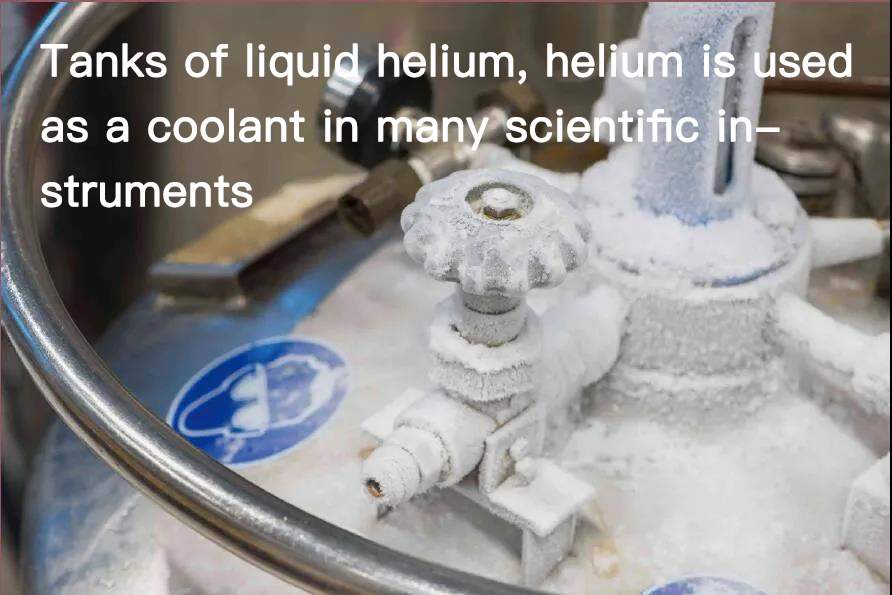
We can often see children on the street holding balloons in their hands. No matter what age, this simple toy is a favorite of children.
Balloons float in the air because they are filled with gases that are less dense than air, such as hydrogen and helium. Ten years ago, helium balloons were all over the streets and alleys. Helium was colorless, odorless, and would not burn.
It was safe and harmless to fill in the balloon. But today’s balloons are no longer so safe. The gas filled in them becomes hydrogen, which can burn in case of fire.
If a large number of balloons burst together, there is even a danger of explosion. Why should the gas filled in the balloon be replaced with hydrogen?
Unique Helium
The reason for the change in balloons is very simple. Compared with 10 years ago, the cost of helium has more than tripled.
A cheap little toy such as a balloon cannot be charged with “high-end” helium. So why has helium become so expensive?

Helium is a true “import”, and its existence was discovered outside the earth.
In August 1868, French astronomer Pierre Jeansan was observing a total solar eclipse in southern India when he accidentally discovered an unfamiliar bright yellow line in the solar spectrum.
At about the same time, British astronomer Joseph Rockier independently discovered the yellow line and named the element that emits yellow light “helium”.
In the following 20 years, people have not been able to find helium in the earth. It is like a gem hanging in the sky, just out of reach.
In 1895, British chemist William Ramsey isolated a colorless and odorless gas from a uranium-bearing mineral.
After spectral analysis, he was pleasantly surprised to find that it was the “helium” previously found in sunlight. “, people finally found helium on Earth! Of course, at this time, people didn’t know what helium could be used for.
They only knew that it was a gas lighter than air, so let’s use it to fill airships and balloons.
The helium gas that was hard to find from the formation was put into the sky like this.
As an element with a molecular weight only smaller than hydrogen, helium is one of the earliest substances produced after the Big Bang, and its abundance in the universe is also second only to hydrogen, accounting for about a quarter of the total universe.
However, the density of helium is very small, and it is a chemically very stable element that hardly reacts with any matter, so the original helium in the universe and the helium emitted by sunlight cannot be retained on the earth.
The only sources of helium on Earth are radioactive mines. In the molten state of the earth at the beginning of its birth, some radioactive elements were sealed in the mantle and core.
These radioactive elements will continuously release alpha particles in the process of decay. These alpha particles are essentially two protons and two neutrons.
Consists of helium-4 nuclei, which is the helium gas we need. This helium accumulates underground and can be collected during large-scale mining of radioactive minerals.
At present, the places with the most abundant helium reserves on earth are only the mining areas in a few regions such as the United States and Qatar.
We can neither find more production areas of helium nor a method for producing helium. Gradually, helium is used less and less. The price has also increased year by year.
Indispensable helium for modern society
The reason why the price of helium has risen is not only because the reserves are getting smaller, but also because people have discovered that helium has more irreplaceable functions besides inflatable balls.
Superconducting magnets refer to a class of metal coils in which the movement of atomic nuclei stops and resistance almost disappears at low temperature.
Superconducting magnets can efficiently transmit electrical energy and generate almost no heat, and are essential parts of high-tech equipment such as maglev trains, nuclear magnetic resonance imagers, and high-energy particle colliders.
However, all metals that can be made into superconducting magnets must be in a superconducting state in an ultra-low temperature environment.
For example, niobium-titanium alloys, which are often made into superconductors, require the ambient temperature to be -268.8 °C. Only liquid helium can achieve such a state.
low temperature. The superconducting magnets of various high-tech equipment consume most of the helium on the earth.
For example, the European Hadron Collider, which is 27 kilometers long, uses about 130 tons of liquid helium to cool the superconducting magnets to -271.3 ° C. , these 130 tons of liquid helium account for 1% of global helium production, not to mention the liquid helium used in maglev trains and MRI machines in hospitals around the world.

Helium is also often used as a protective gas to fill atomic reactors, accelerators, lasers and other equipment to isolate oxygen to protect metals from oxidation.
Helium is also commonly used in industry to isolate oxygen when smelting and welding metals.
Because helium has a very strong diffusivity and a very small amount of escape can be easily detected, it can also be filled into sealed machinery and equipment, such as spacecraft and rockets, to test their sealing performance.
Helium has another very interesting use. Many people have had the experience of taking a breath of helium, and their voices became sharp and thin. In fact, people who have conducted deep diving operations for a long time just talk like this when they just landed, precisely because they inhaled a certain amount of helium.
When people go deep diving, the pressure on the human body increases, the amount of air dissolved into the blood increases, and the main component of air – nitrogen, the more the amount in the body.
When the partial pressure of nitrogen in the blood reaches a certain height, people will experience anesthesia or even fainting, commonly known as “nitrogen narcosis”, which is very dangerous during diving.
The solubility of helium in the blood is very low, and it will not remain in the human body in large quantities even under high pressure.
Therefore, people who add helium instead of nitrogen to the oxygen tank can avoid the appearance of people who do deep diving for a long time. Nitrogen narcosis.
In our daily life, the place where we most often come into contact with helium is in the supermarket. The helium-neon laser is filled with helium gas and neon gas with a volume ratio of about 10:1.
When irradiated by light, the helium gas transmits concentrated light energy, and the neon gas is stimulated to generate radiation and emit laser light.
As the earliest gas laser, helium-neon lasers are cheap in cost and low in energy consumption, so they are widely used in various barcode scanners.
In addition to barcode scanners, helium-neon lasers are used in devices such as microscopes, spectrometers, and optical disk drives.
Broaden source, reduce expenditure and maintain helium
On the one hand is the decreasing helium inventory, on the other hand is the gradually expanding helium consumption.
In the case of short supply, the price rise of helium is inevitable. But even so, according to the current use, the earth’s helium inventory is only enough for about 20 years.
In the face of this situation, researchers are using their brains one after another.
The most direct way is to reduce expenditure. Now the nuclear magnetic resonance instruments commonly used in hospitals are basically equipped with liquid helium devices with good tightness and reduced evaporation, which greatly reduces the demand for liquid helium.
In 2014, Chinese scientists developed the first industrial helium recycling system, which can recover and purify the helium containing impurities used in industrial production, and then reuse it. At present, the purification capacity of this system has reached the level that helium with purity of only 10% can be purified to more than 99.5%.

Since superconducting magnets are the main source of helium, is there any way to reduce the use of helium in this field?
More scientists try to replace liquid helium refrigeration with other refrigeration methods, and use a refrigerator without liquid helium to reach the working temperature of superconducting magnet. Recently, the nuclear magnetic resonance imager using liquid helium free superconducting magnet jointly developed by several scientific research institutions such as Nottingham University in Ningbo, Zhejiang Province and the school of medicine of Zhejiang University has been put into use.
The superconducting magnet of this imager replaces the original refrigerant liquid helium with copper tape with low cost and high safety, and is cooled by direct conduction cooling technology.
Of course, open source is the fundamental way to ensure the continuous supply of helium.
The earth’s atmosphere contains about 0.0005% helium. Although it is very small, when helium is in short supply, people will still use the principle of different boiling points of gases to separate helium from the atmosphere.
In such a bitter day, people found a lot of helium in the moon. Originally, because the moon itself has no magnetic field, helium particles radiated from the sun can “camp” in the lunar soil.
In contrast, helium particles radiated to the earth slowly diffuse along the earth’s magnetic line of force under the action of the earth’s magnetic field, and finally leak into outer space through the atmosphere.
Scientists calculated that heating the lunar soil to 80 ℃, about 200 million tons of lunar soil can extract 1 ton of helium, while the same amount of earth’s soil can produce only 10 kg of helium.
With the acceleration of our development of the moon, maybe the moon can become a Persian Gulf like energy base in the future, and we can get rid of the crisis of helium shortage.
In the days when we used to play helium balloons happily, no one could think that in less than ten years, we would face the dilemma of no helium available?
Besides helium, how many resource crises are coming? Cherishing resources is not just a slogan, but the best choice to ensure our happy life in the future.
Comments